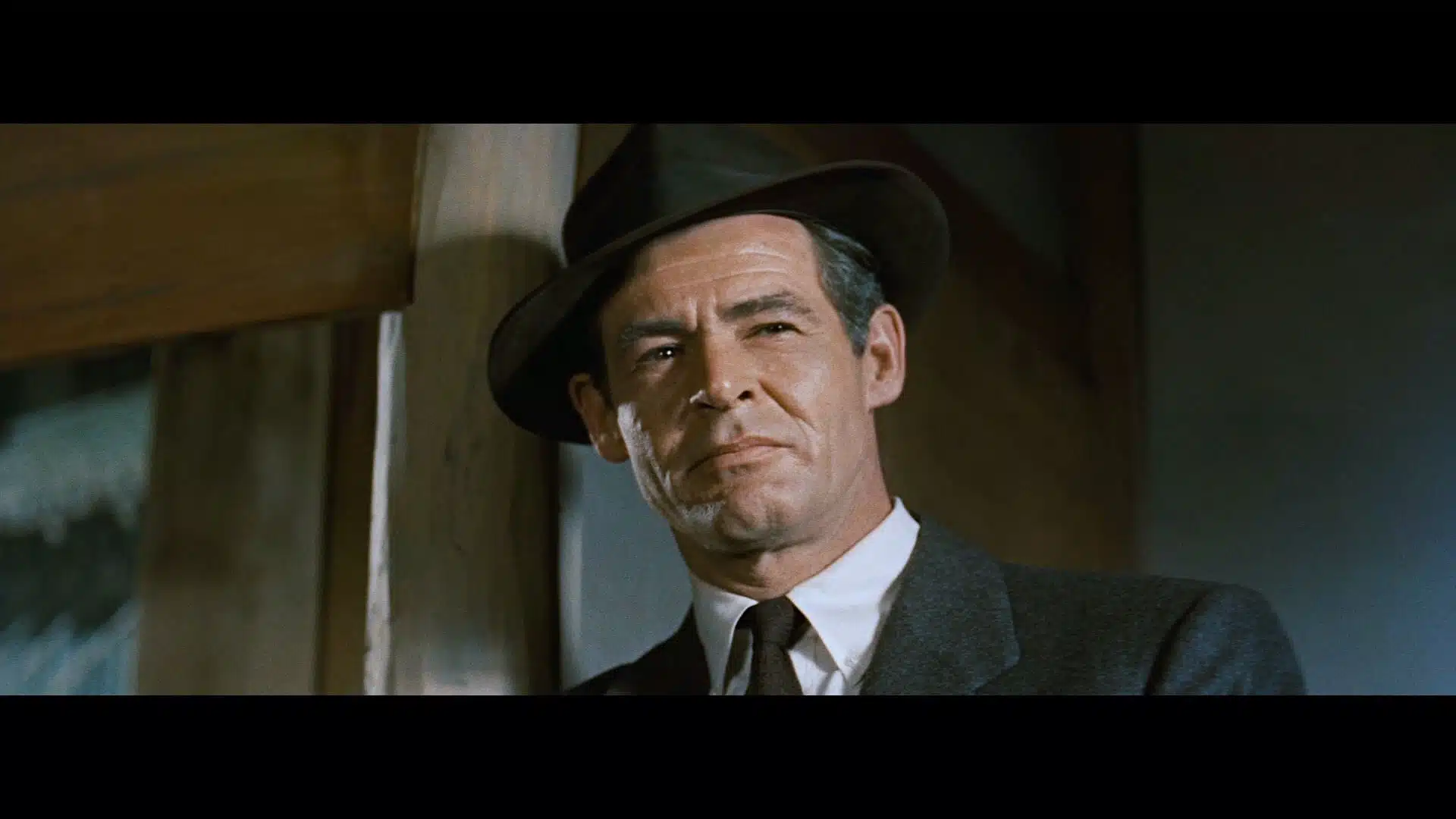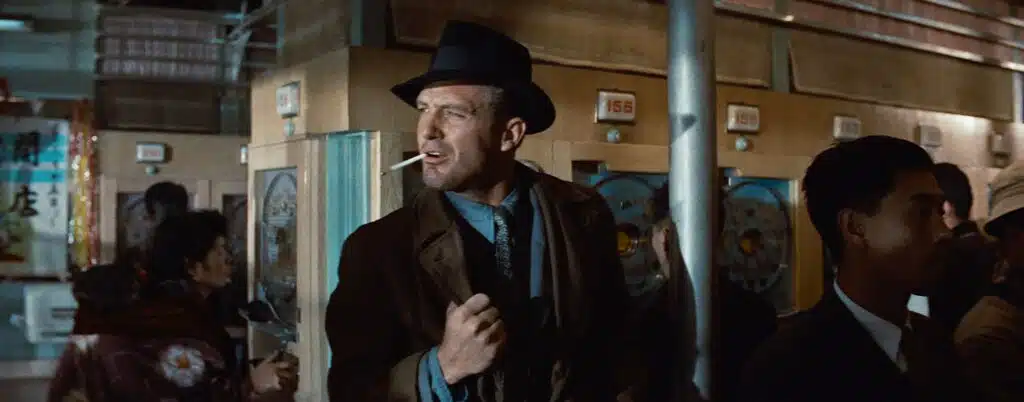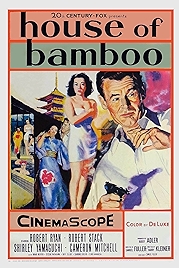In many ways an atypical Sam Fuller film, House of Bamboo does conform to Fuller type in one specific way – strong performances by his two leads.
They are Robert Ryan and Robert Stack, as two guys involved in different ways in crime in post-War Japan. Doing almost nothing at all, Ryan acts Stack right off the screen as crime boss Sandy Dawson, an American who has found rich pickings in the debris of post-War Japan. And yet Stack is also pretty effective as a smalltime hoodlum who arrives in the country and immediately starts throwing his weight around and extorting money in the smallest of smalltime ways.
What Eddie Spanier (Stack) doesn’t know is that Dawson runs all the protection rackets in this town. He finds out soon enough. What Dawson doesn’t know is that Eddie Spanier’s real name is Eddie Kenner and that he’s not really a smalltime hoodlum who’s wandered onto a bigtime gangster’s territory by mistake.
Spanier/Kenner isn’t the only man who seems to be off his turf. Fuller’s films are almost always concerned with social issues in the USA and are generally shot fast and hot in black and white. But here we are in Japan – opening shot is of a heist taking place in front of Mount Fuji, with the voiceover setting us doubly straight by telling us that the film was shot in Japan in 1954. House of Bamboo is shot in CinemaScope widescreen and in colour – it’s Deluxe Color, though Fuller’s DP, Joseph MacDonald, squeezes rich, saturated, almost Technicolor hues out of the film stock, and Fuller and production designer complement MacDonald by repeated use of the colour red.
If the look is non-trad Fuller, in other respects House of Bamboo is true to Fuller’s MO. He shot it guerrilla style, without permits, on the streets of Tokyo and Yokohama, making much of the street ambience as Japan picked itself up after the Second World War. It turned out to be quite a cheap movie to produce, in spite of the Scope/Deluxe overhead.
If it feels often like a 1940s movie out of time that’s because it’s a remake of the 1948 thriller The Street with No Name. Fuller tries to drag it up to date with a new subplot about an American gangster secretly married to a Japanese woman. He shoehorns in a a concern with the subordinate role of the Japanese woman, especially vis a vis the American man. And most explicitly he adds in a critique of American imperialism in scenes where American mobsters in Japanese robes lord it over the native underlings. He’d return to the Japanese/American theme later in his 1959 drama The Crimson Kimono.
Apart from the street scenes and a dynamically thrilling heist sequence, there’s a static quality to a lot of this movie and entire sequences that look like they’d also be much happier in black and white.
For the most part the joy of watching comes from the interplay between Stack and Ryan. Stack as the hustler apparently bridling at taking orders from the gang boss, as the guy who’s supposedly always run his own racket, no matter how small. Ryan as the effortlessly-in-charge master of all he surveys, who runs a cool ship until it’s necessary to cut someone down to size.
The Stack character – two characters in fact, since he’s pretending to be someone he isn’t – is a touch underwritten, which throws sympathy onto Ryan’s Sandy Dawson. We’re meant to be rooting for Eddie, whatever surname he’s using. Instead Sandy starts to gain stature as some sort of tragic hero. His organisation has been infiltrated, after all, by a man who is to all intents and purposes a spy. Ryan’s magnetism only reinforces the problem. But then that is House of Bamboo all over, for all its pluses a movie that doesn’t seem quite decided which direction it’s heading.
House of Bamboo – Watch it/buy it at Amazon
I am an Amazon affiliate
© Steve Morrissey 2023


